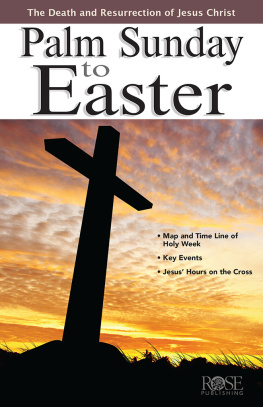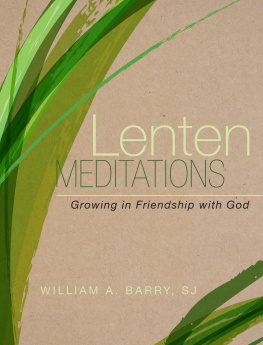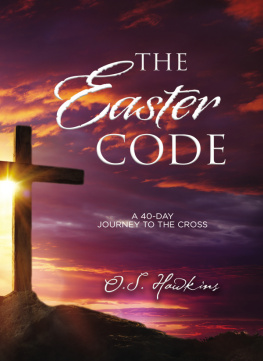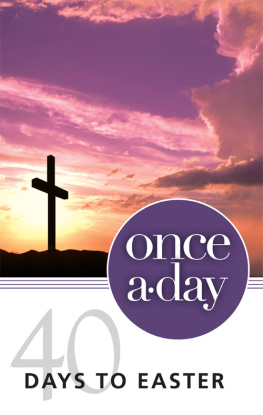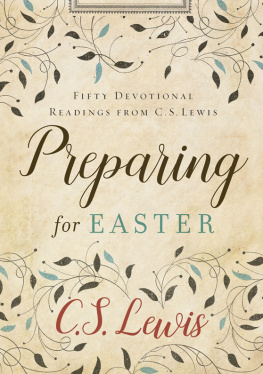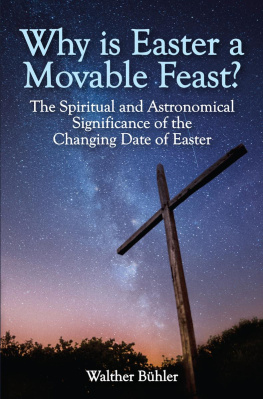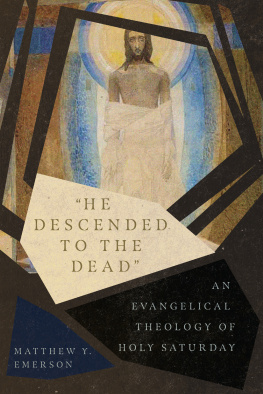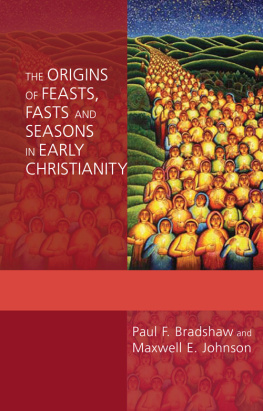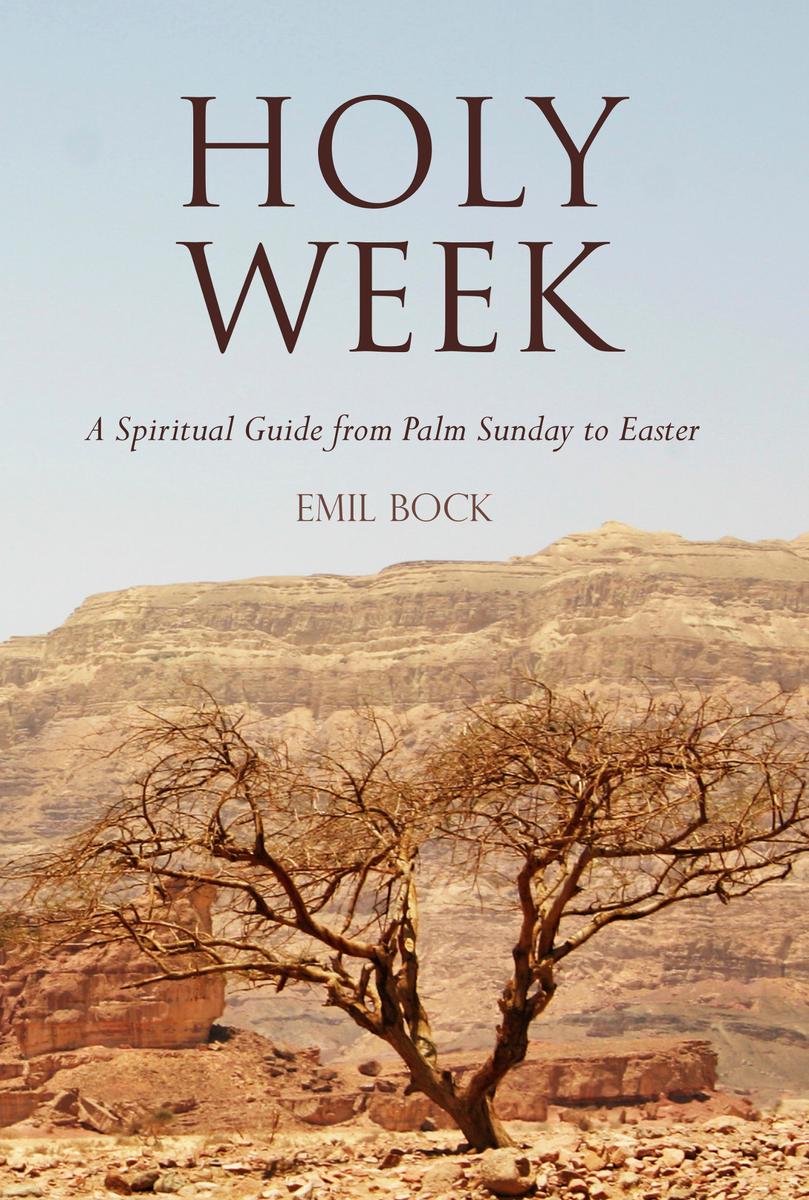The Week of Weeks, or Holy Week, is the climax and focus of the gospels. Five of the sixteen chapters of the Gospel of Mark are devoted to this one week. The events later in that week have been lived through and re-enacted by countless Christians through the centuries. The Lords Supper or Eucharist, which in The Christian Community is celebrated as the Act of Consecration of Man, connects us to one of its central events.
One of the founders of The Christian Community, Emil Bock, saw a need for a renewal of theology to go alongside the renewal of religious life which is this movements central purpose. Fired by the spiritual investigations of Rudolf Steiner and his own wide reading of the occult and mythological traditions, Bock illumined the great cosmic pictures of the gospels. He wrote a series of books on the Old and New Testament. Buried deep within the volume, The Three Years: The Life of Christ BetweenBaptism and Ascension, is a chapter on Holy Week. Here we find the spiritual and cosmological background for the events that unfolded in this crucial week. Bocks explanations satisfy the need of modern human beings not only to feel deeply the pathos and grandeur of what is described, but to understand the events in order to penetrate to deeper layers of meaning.
Bocks approach is at once clear and poetic. He loves to give the widest perspective, soaring like an eagle above what he surveys, allowing the underlying contours of the landscape to become visible, even if sometimes the detail is unclear. He also shows the interest of a true pastor, drawing out the moral direction that can be taken from the events, although he never does this in a moralising way.
Bock never intended his work to be the final word. He maintained a dialogue with modern theological and archaeological investigations, and would surely have integrated the many results of this research that have been produced in the more than half a century since he completed The ThreeYears. Still it seems worthwhile to make his work accessible to a new generation without making major changes, for this would mean rewriting it entirely. Perhaps one detail can be added to, for it makes the picture in many ways more subtle and more revealing. This concerns the identity of the crowds present on Palm Sunday and Good Friday. Bocks descriptions imply that there was only one crowd in Jerusalem, which was present on both occasions, crying Hosanna on Palm Sunday and Crucify him! on Good Friday. However, there is strong evidence that the population of Jerusalem swelled many times over in the week before Passover, growing from around 80,000 to as many as 250,000. It is quite conceivable that different groups from this huge number were present on the different days of Holy Week. What is revealed is not necessarily the fickleness of individuals, but the phenomenon of the crowd which can enlist individuals in a higher recognition or in a deadly rejection.
To Bocks writing we have added extracts from the gospels for each day. The translation chosen is Jon Madsens which is perhaps closest to Bocks own translation of the New Testament into German.
The week before Easter is not only a significant and exceptional period in the Christian year, it is important also in the cycle of nature. In the Christian year, the whole drama of the Passion is enacted in this space of time, and its events form the grand conclusion of the gospel. In various regions of Christendom it is called not only Holy Week, but also the Great Week. Only those able to experience its greatness can fully participate in the festival of Easter.
In natures year this week before Easter is important because the spring full moon occurs in it. The spell of winter is finally broken; by leaps and bounds the new life of the earth goes forward. In the equinoctial conflict of day with night day gains the victory, which is consolidated in the triumph of light on the first Sunday after the vernal full moon.
The events of Holy Week, as related in the gospel, do not harmonize at first with spring in nature. On the contrary, they stand in sharpest contrast to it. Only at the very end, when the Easter sun has risen, the festival of rejoicing harmonizes with the exultation of spring. The solemn drama of Holy Week is the preparation for this harmony. The springtime of nature comes about of itself. The inner spring of the Easter festival must be achieved by the path of pilgrimage which passes along the stations of Holy Week.
The seven days before Easter can be compared with the Twelve Holy Nights of Christmas. This period between the years is the right preparation for the twelve months of the New Year for everyone who contemplates the inner meaning of midwinter. On those who inwardly participate in the mystery drama of the Passion the seven days of Holy Week bestow new forces for the whole of their future destiny.
The events which happened two thousand years ago were providential prototypes. Through them the seven days of each week have taken on new meaning. The names of the seven days of the week in the European languages show that they reflect the qualities of the seven planetary spheres. Thus we have the sun (Sunday), moon (Monday), Mars (Tuesday, French: mardi), Mercury (Wednesday, French: mercredi), Jupiter (Thursday, French: jeudi), Venus (Friday, French: vendredi), Saturn (Saturday). In that one week before Easter, at the end of the life of Jesus, each weekday was stamped anew with a Christian planetary aspect, over and above the cosmic differentiation.
Christendom at present has little understanding of the content of the days of Passion Week. Certainly, on Good Friday thoughts are turned to the cross on Golgotha, and in some parts of Christianity every Friday is marked as a fast day. But beyond this no striking picture has been attached to any day except Palm Sunday, which in some countries is celebrated with a display of palm branches. In reality, however, each of the seven days reveals a cosmic secret in human and historical form.
At the entry of Christ into Jerusalem on Palm Sunday, the sun of the past, the old sun, stood again royally in the heavens. Nevertheless it was about to receive its dismissal, for the new sun, the Easter sun, was to rise on the following Sunday.
When on the Monday Christ cursed the fig tree and cleansed the Temple in the holy city, his encounter was with the moon-forces of the ancient world which needed renewal.
On the Tuesday, it was the Mars spirit which Christ bent to his purpose. For on the Tuesday of that week Christ was in conflict with his opponents, who came forward group after group in the hope of trapping him in his teaching. Christs weapon was the spirit-word; finally, in the echo of the conflict, he retired with the disciples to the Mount of Olives and revealed to them an apocalyptic view into the future.
On the Wednesday, in the anointing at Bethany and in the betrayal of Judas, Mercury encountered the Christ-sun.
And as on Maundy Thursday Christ washed the disciples feet and administered the sacrament to them, there shone a Jupiter light, full of future promise, in the sorrow of their souls.
On Good Friday all that has ever been granted to man by the goddess of love, Venus or Aphrodite, was most wonderfully transmuted and enhanced. A deed of love was done on that day greater than all other possible deeds of love. Loves sacrificial death on Golgotha was the transformation of the Venus-principle through the sun-principle of Christ.
As the body of Christ rested in the grave, the Christ-sun met the Saturn-spirit in the universe; until finally Sunday brought the octave, and the sun itself rose in the heavens, the Christ-sun which had fought its way through all these stages.


